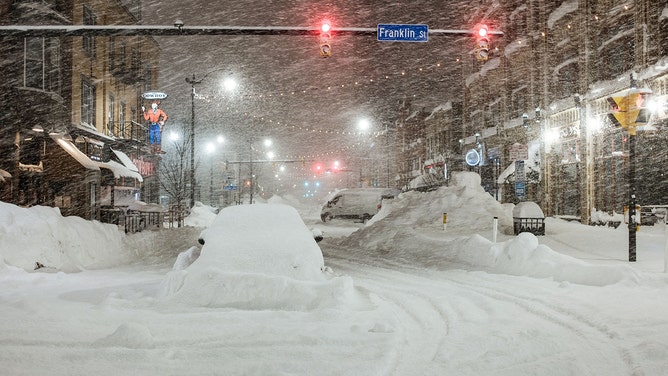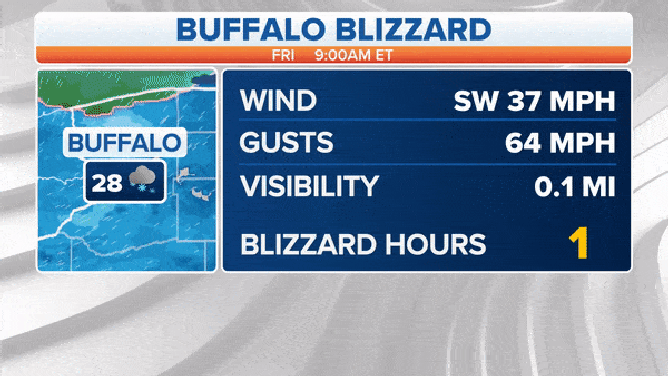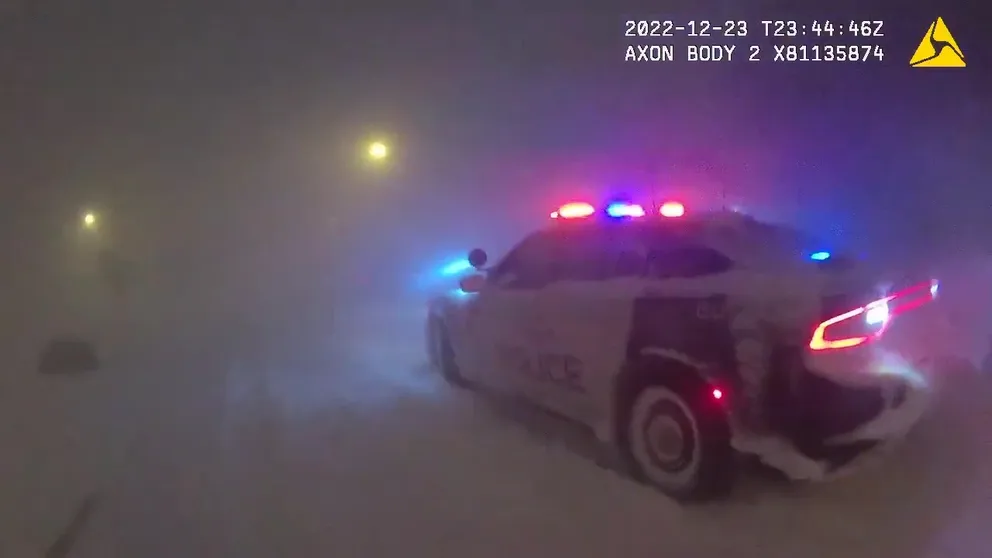Buffalo’s deadly blizzard in December ignites county’s new plan to keep residents safe
Erie County Executive Mark Poloncarz said that after reviewing the Christmas blizzard in Buffalo, they would be making new steps toward future life-threatening storms.
Watch: Stunning Buffalo police bodycam footage shows daring rescue amid deadly blizzard
As blizzard conditions raged in Buffalo for hours, battering the region with furious winds and blinding snows that left visibility at or near zero, Buffalo Police officers fanned out into the city trying to rescue as many as possible who found themselves trapped in the dire situation.
BUFFALO, N.Y. – A new emergency alert and ranking system should be in place for Buffalo's next life-threatening storm following the deadly blizzard in December.
Erie County Executive Mark Poloncarz said that after reviewing the Christmas blizzard in Buffalo, they would be making new steps toward future life-threatening storms.
Poloncarz said he wants the county to rank blizzards as meteorologists do for hurricanes and also send out notifications, similar to Amber Alerts, for public safety.
On Tuesday, Poloncarz said he had ordered county emergency services to prepare the documents and other requirements necessary to expedite the activation of an "emergency alert system" notification to all phones, TVs, radios and other devices to all in our county when a future storm is near.
"Preparing the required documents and other items now will ensure we do not waste time in the future in getting out a needed warning to everyone in our community," he said in a tweet.
DRONE CAPTURES INCREDIBLE VIEWS OF THUNDERSNOW OVER BUFFALO SKYLINE AMID HISTORIC SNOWSTORM
'People have lost everything': Buffalo blizzard survivors work together to recover
Buffalo blizzard survivors are in need of supplies after a major winter storm dumped more than 5 feet of snow on the area. Residents continue shoveling out and tell FOX Weather’s Robert Ray the impact the storm has had on the city.
Deputy Commissioner Gregory Butcher, who handles the disaster preparedness for the county's Department of Homeland Security, told the The Buffalo News that even though Erie County has been part of the emergency alert system for years, county officials didn't initially think it was needed for the blizzard.
Butcher said he believed the county had enough advance warning and was able to get its message out to the public on many different platforms.
"You know what, we live and we learn," Butcher told the newspaper. "Who would have thought that with five days of notifications, we still were missing part of the population?"
BUFFALO BLIZZARD DEATH TOLL JUMPS TO 37 AS CREWS CONTINUE DIGGING OUT REGION

Vehicles are seen abandoned in heavy snowfall in downtown Buffalo, New York, on December 26, 2022.
(JOED VIERA/AFP / Getty Images)
It was a snowstorm that halted responses by emergency services and forced drivers to seek shelter in stores. Light snowfall began days before the main event, which kicked off on Dec. 23 and lasted through Christmas Eve. During the heart of the blizzard, winds reached hurricane force and snow piled up in feet, not inches.
Despite all the warnings about the approaching storm, more than three dozen people were killed, and many others were recused from the grips of what has been labeled a "once-in-a-generation" storm.
The metro region averages around 95 inches of snow every year, but experts believe the ingredients for a catastrophic storm aligned as few winter storms do. The impacts were too much to handle even for the best-prepared communities.

Here's a look at the Buffalo blizzard from Dec. 23-24, 2022.
(FOX Weather)
On top of Mother Nature's factors, some leaders in the Empire State questioned the local response to the disaster.
Poloncarz has been at the forefront of messaging and said there was likely more that local governments, including the city of Buffalo, could have done in preparing for the blizzard.
"Storm, after storm, after storm, after storm, the city, unfortunately, is the last one to be open, and that shouldn't be the case," Poloncarz said during a news conference following the storm. "It is embarrassing to tell you the truth."
If climatology plays out, Buffalo likely has yet to experience its last snow event of the winter weather season, even though the region has already seen accumulations of 6 inches above what a typical year produces. The second-largest city in New York has already seen more than 101 inches of snow, with wintry precipitation possible through at least April.
"We have experienced numerous blizzards during my administration," Poloncarz said. "But as we all know, not all blizzards are the same as to ferocity."

